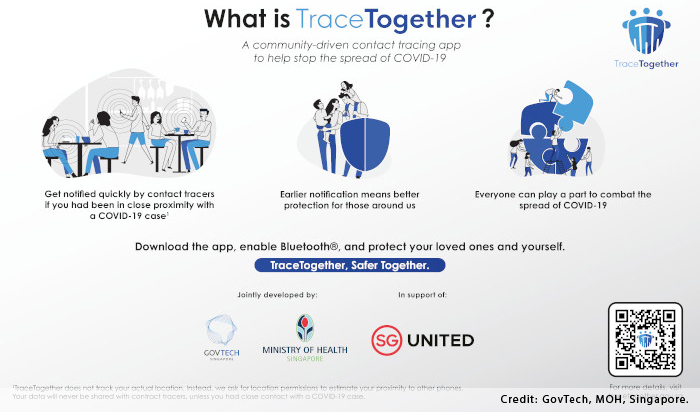The year 2020 was the beginning of a new decade filled with promise, optimism and excitement. Just like people around the world had planned vacations, life events, and career growth, technology companies were poised and ready to delve into cutting-edge projects such as the internet of things (IoT), next-generation telecommunication networks (like 5G), big-data analytics, artificial intelligence (AI) that uses deep learning, and blockchain technology, to name a few.
But 3 months into 2020, the world faces an unprecedented challenge in the form of a global health pandemic triggered by the novel coronavirus (SARS-CoV-2), which causes the respiratory disease, COVID-19.
With a drastic change in priorities, companies and organizations around the world shifted their focus to finding quick, effective solutions to control and mitigate this new global threat. These efforts were more pronounced in some countries than others.
One of the most successful countries in containing the spread of the SARS-CoV-2 virus within its borders has been Singapore. This was mostly thanks to them being prepared for situations like this in the wake of the Severe Acute Respiratory Syndrome (SARS) outbreak that happened back in 2002. They undertook aggressive testing and extremely transparent case reporting to domestic and international communities, swift and decisive interventions were made to ensure effective social distancing, supported by frequent and consistent public health communications.
Singapore was one of the first countries to detect COVID-19, and in early February it had some of the highest number of confirmed cases by territory. Yet, since then, there has been no exponential rise in cases in the country. This can be attributed to a robust healthcare infrastructure and the innovative use of technology solutions to contain the spread of the virus.
The Government Technology Agency of Singapore (GovTech), which is the in-house IT agency of the Singapore Public Service, in collaboration with the Ministry of Health (MoH) launched a mobile app called “TraceTogether”, to help support and supplement contact tracing efforts in the nation-state, in an effort to curb the spread of COVID-19.

Contact tracing is the exercise of identifying the people that an interviewee had come in contact with in the recent past. Before the introduction of the TraceTogether app, these efforts relied solely on the memory of the interviewees. This presented obvious challenges, because not all interviewees could remember all their contacts, or in some cases, did not have information on the people they had been in contact with.
TraceTogether exchanges short-distance Bluetooth signals between phones and detects other participating TraceTogether users in its proximity. Records of these encounters are stored on each user’s phone. After a user is interviewed by the MoH as part of the contact tracing program, the user can consent to send their TraceTogether data to the MoH.
This data facilitates and hastens the contact tracing process, and allows contact tracers to inform other TraceTogether users who are close contacts of Covid-19 cases more quickly. This enables users to take necessary actions, such as monitoring their own health closely for flu-like symptoms.
In the interest of ensuring user privacy, the TraceTogether app does not collect or use any kind of location data, and also doesn’t access a user’s contact list or address book. It uses only Bluetooth data to establish a contact and does not store information regarding where the contact took place.
Also, no data is uploaded to the government. All collected data is stored only on the user’s phone and is encrypted. If and when a person is confirmed to be infected with Covid-19, the government then requests the user to upload the data to enable contact tracing of their close contacts.
If a user does not come into close contact with a positive Covid-19 case, TraceTogether data that is older than 21 days is automatically deleted.
According to the World Health Organization, contact tracing is extremely important because closely monitoring the contacts after their exposure to an infected person will help the contacts get the necessary care and treatment, and will prevent further transmission of the virus. There are three steps in the process of contact tracing: contact identification, contact listing and contact follow-up.
In the case of China, WHO said that strict quarantine, isolation and contact tracing measures were justified for the sake of saving lives, and avoiding the overcrowding of health systems with critically ill cases that even the health systems of developed countries often lack the capacity to treat.
In Singapore, just as the initial cases of COVID-19 showed up at the end of January, health officials promptly identified and isolated the infected people and began contact tracing.
According to Mr. Vivian Balakrishnan, Singapore's Minister for Foreign Affairs, as of March 23, 2020, the TraceTogether app has been installed by more than 620,000 users.
This extensive contact tracing approach employed by Singapore played a significant role in its successful efforts to contain the spread of COVID-19 within the country. The Singapore case study is a testament to the power and effectiveness of technology in the sphere of disaster and calamity management.